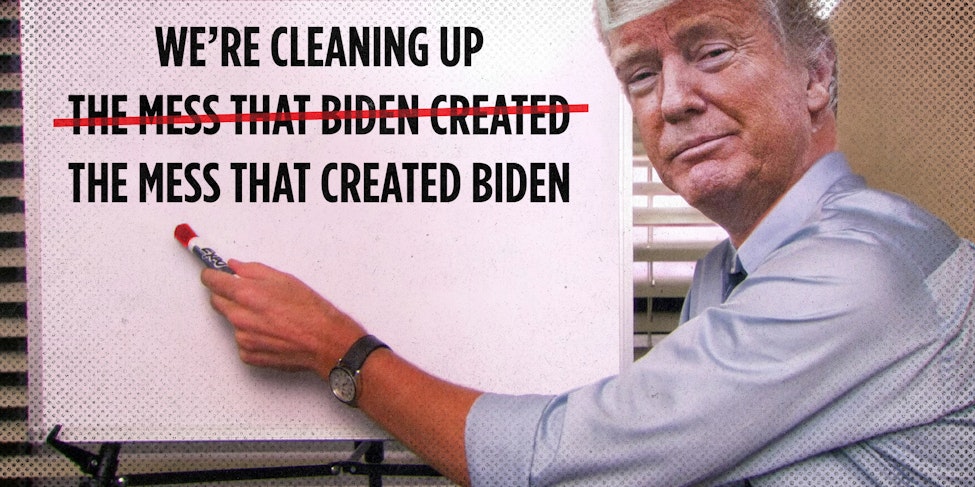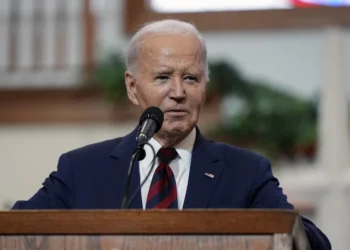“We must not let our rulers load us with perpetual debt.” —Thomas Jefferson (1816)
President Ronald Reagan was the inspirational “Godfather” of the Department of Government Efficiency. His supply-side economic strategy, “Reaganomics,” which the statist Democrat Party socialists derided as “trickle-down economics,” was based on the commonsense solutions that were Reagan’s trademark.
But as the inimitable Thomas Sowell declared: “There are no solutions; there are only tradeoffs. … You try to get the best tradeoff you can get.”
Reagan’s economic plan was based on the trilogy of cutting taxes combined with reducing spending and promoting free enterprise. “Let us begin by challenging our conventional wisdom,” he declared. “There are no constraints on the human mind, no walls around the human spirit, no barriers to our progress except those we ourselves erect.”
Regarding how government impedes the economy, he said: “Government’s view of the economy could be summed up in a few short phrases: If it moves, tax it. If it keeps moving, regulate it. And if it stops moving, subsidize it. … Government does not solve problems. It subsidizes them.” And that has not changed.
Reagan’s policies lifted the nation out of the disastrous economic conditions created by Jimmy Carter. It was a colossal task, but over two terms, his policies resulted in a historic economic recovery. The numbers don’t lie. According to the Ronald Reagan Presidential Foundation and Institute:
- 20 million new jobs were created.
- Inflation dropped from 13.5% in 1980 to 4.1% by 1988.
- Unemployment fell from 7.6% to 5.5%.
- Net worth of families earning between $20,000 and $50,000 annually grew by 27%.
- Real gross national product rose 26%.
- The prime interest rate was reduced from an unprecedented 21.5% in January 1981 to 10% in August 1988.
In December 2016, a month before President-elect Donald Trump took office after his shocking defeat of Hillary Clinton, despite my concerns about his sketchy political record, I concluded that the incoming Trump administration was going to be a Reagan revival. And largely, it was just that.
But Trump did not win a second term in 2020 to codify his exceptional domestic and foreign policies because the Democrats had spent the previous four years using their deep state operatives to undermine the administration, and then used the ChiCom Virus pandemic as cover to launch a historic campaign to suppress free speech and implement a bulk-mail ballot fraud strategy.
In 2025, 44 years after Reagan jump-started the nation’s recovery from the Carter debacle, I’m reminded of what that great American sage Yogi Berra once said: “It’s like déjà vu all over again.” In Trump’s second term, he is endeavoring to lift the nation out of the even more disastrous domestic and foreign policy disasters left in Joe Biden’s wake.
And he is using a similar playbook.

As I noted in 2017, the day Trump arrived in DC, he dropped a bomb on the Beltway status quo in Congress and its special interests. He dropped a bomb on the regulatory behemoths and their bureaucratic bottlenecks. He dropped a bomb on the trade and national security institutions and alliances that had failed miserably over the previous eight years. And he dropped a bomb on all the pundits and mainstream media outlets.
In 2025, Trump has doubled-down on the institutional carpet bombing, but this time around, a wiser Trump has implemented his “attack of the disruptors” strategy — deploying atypical department heads that are more communicator than administrator, combined with a brilliant strategic fusillade of executive orders and actions beginning on 20 January, which the Demos never saw coming.
There was no bigger disruptor in Trump’s stable than Elon Musk, an actual “African-American” whom he tagged to head the start-up of DOGE. It was another bomb the Demos never saw coming, a new government agency tasked with slashing and burning government waste, under the leadership of a brilliant billionaire entrepreneur.
The DOGE concept was hatched in conversations last fall between Trump and Musk and was one of the most innovative ideas to emerge from a presidential election since Reagan. Initially, DOGE was going to be a tag-team effort by Musk and Vivek Ramaswamy, but Musk quickly dominated the space.
Rather than make DOGE an external entity as they had originally discussed, a “government efficiency commission,” Trump issued an EO making it an official government entity. And thus began Musk’s 130-day experiment to see if cutting government waste was possible.
Despite his initial objectives to cut $1 trillion in federal spending, Musk and DOGE will have cut $160 billion by the end of 2026 when DOGE sunsets — far short of his ambitious goal to shrink the $7.3 trillion budget. They also cut almost 1% of the federal workforce. Not bad for about three months of effort. All under the looming national debt bomb of $37 trillion.
Before his departure last week, Musk said: “In the grand scheme of things, I think we’ve been effective. Not as effective as I like … but we’ve made progress. There’s a long way to go.”
Despite not hitting his number, Musk and DOGE have shone a bright light on government waste, and Trump can keep that momentum going, though it will be a political balancing act ahead of the midterm elections next year.
A day before leaving DOGE, Musk expressed his discontent with Trump’s “big beautiful bill,” saying, “I was disappointed to see the massive spending bill, frankly, which increases the budget deficit, not just decreases it, and undermines the work that the DOGE team is doing.”
This week, he was far more pointed in his criticism, declaring: “I just can’t stand it anymore. This massive, outrageous, pork-filled Congressional spending bill is a disgusting abomination. Shame on those who voted for it: you know you did wrong. You know it.”
He says that any permanent reduction in spending and government waste must be made by Congress.
Musk understands the political realities of trying to implement cuts through Congress: “It’s pretty difficult [to cut anything]. It’s like: How much pain is the Cabinet and Congress willing to take? It can be done. But it requires dealing with a lot of complaints.”
That has always been the key question and primary obstacle to reducing the size of the federal behemoth.
In a January conversation with a friend, whose wife is a key adviser to DOGE, I said I would be shocked if Musk could cut a dime from the federal budget because every dime is tied to the coattails of members of the House and Senate, regardless of their party.
In that light, Musk’s $160 billion is admirable, but the biggest waste bucket in the federal bureaucracy is the Department of Defense. SecDef Pete Hegseth announced that $5 billion in wasteful spending on “consultants and contractors” had been identified and would be cut, in addition to the $5 billion already identified, adding up to $10 billion. “We’re just getting started,” he said, which is good because DoD’s budget is a bloated $850 billion.
I will believe it when it happens.
Frankly, the greatest threat to building and maintaining a robust military defense is waste, and anyone who has spent any time around DoD’s contracting and acquisitions programs knows this to be true. However, as noted above, every dime is tied to some congressional member’s district or state. In short: Follow the money.
Given the existential threat posed by the ChiComs, Republicans and Democrats are subjecting the nation to great risk by allowing waste to wither our military-industrial might.
Trump, who is taking the lead of DOGE at the moment, is now tasked with announcing who will take the DOGE helm this month.
This week, to bolster support for his spending bill, Trump’s White House released a “big beautiful bill” calculator so folks can estimate their tax savings.
In the end, what is the most important thing Musk and his DOGE team really accomplished? They demonstrated that beyond the certainty of death and taxes is the certainty that professional politicians resist spending cuts.
Seasoned political analyst Brit Hume concludes: “When I started covering Congress back in the late ‘70s, I thought voting for war and raising taxes were the two toughest things for Congress to do. Wrong. The hardest thing by far for Congress to do is to cut spending.”
Florida Gov. Ron DeSantis concluded: “I don’t think there’s any question that DOGE fought the swamp — and so far, the swamp has won. … We have a Republican Congress, and … not one cent in DOGE cuts have been implemented by the Congress.”
Finally, all said, thank you, Elon — especially for enduring the personal attacks and those on Tesla and your customers by those “useful idiots” who suffer from what you aptly described as the metastatic woke mind virus.

Semper Vigilans Fortis Paratus et Fidelis
Pro Deo et Libertate — 1776
Follow Mark Alexander on X/Twitter.
Please join us in daily prayer for our Patriots in uniform — Soldiers, Sailors, Airmen, Marines, and Coast Guardsmen — standing in harm’s way in defense of American Liberty, and for Veterans, First Responders, and their families. Please lift up your Patriot team and our mission to support and defend our Republic’s Founding Principle of Liberty, in order to ignite the fires of freedom in the hearts and minds of our countrymen.
Thank you for supporting our nation’s premier journal of American Liberty.

















